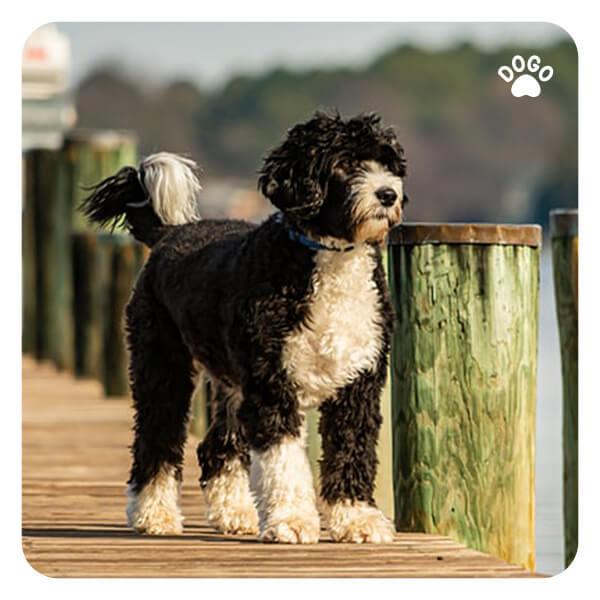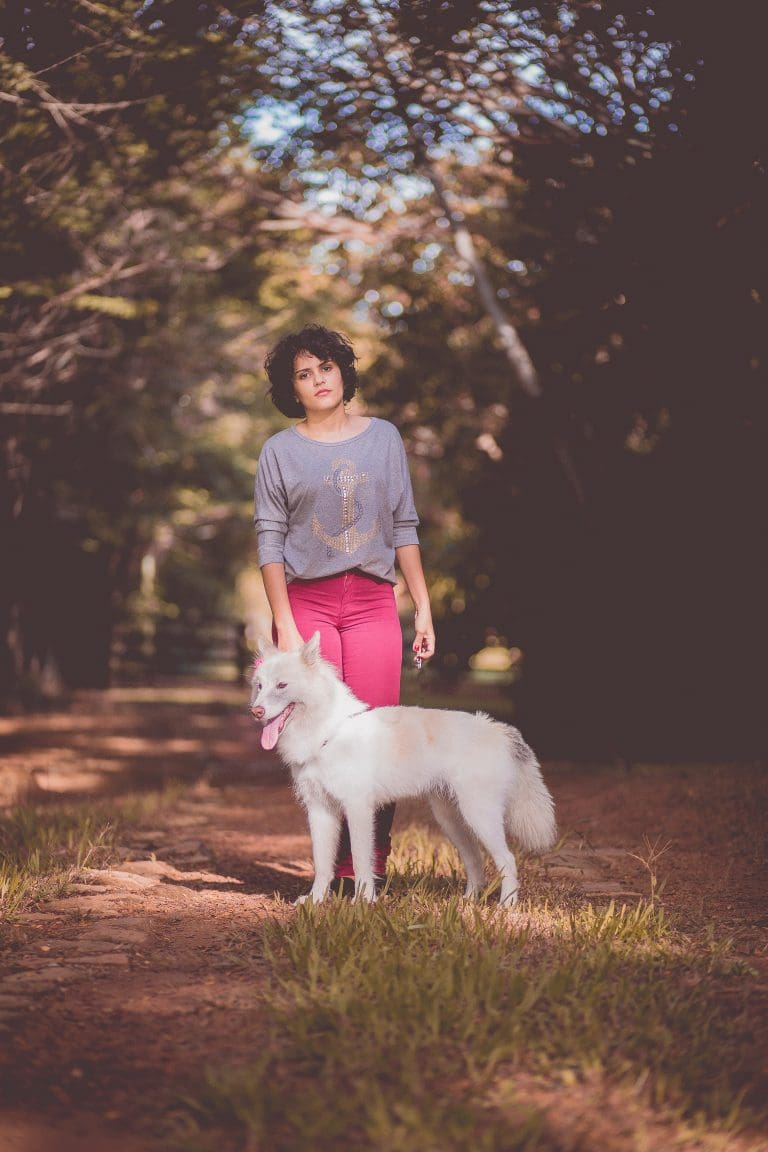10 Best Dog Breeds for Outdoor Enthusiasts
Post Date:
July 18, 2024
(Date Last Modified: November 13, 2025)
Outdoor enthusiasts often prioritize dogs that can match their activity level, handle varied terrain, and remain reliable off leash when safe to do so. The right match balances breed traits, training, and local conditions to create a safe and enjoyable partnership.
Selection criteria for outdoor-friendly breeds
Energy, endurance, and consistent exercise needs are primary selection factors for outdoor suitability; many active breeds require roughly 60–120 minutes of structured activity each day to meet physical and mental needs.[1]
Trainability and temperament determine whether a dog can respond to recall, navigate crowded trailheads, and avoid wildlife conflicts. Climate tolerance, size, and common health predispositions (for example hip dysplasia in large, active dogs) are also considered so owners can match a dog’s body and coat to expected conditions.
When assembling the list below, objective standards included: documented breed activity profiles, typical endurance patterns, off‑leash reliability potential with training, and known health limitations that affect long-term outdoor viability.
Top 10 breeds: quick profiles and standout traits
- Labrador Retriever — Versatile water dog with a steady, high energy level suited to swimming and long hikes; typically needs 60–90 minutes of vigorous activity daily.[2] Pros: excellent temperament around people and water; challenges: heavy shedding and prone to weight gain without regulated diet.
- Australian Shepherd — Agile herding breed ideal for trail running and technical terrain; high endurance and strong trainability. Pros: intelligent and biddable; challenges: needs focused work to prevent boredom.
- Border Collie — Peak working drive and speed for scent work or competitive trail sports; extremely high mental and physical needs. Pros: elite problem-solving; challenges: not ideal for casual owners due to intensity.
- Siberian Husky — Cold-tolerant endurance runner bred for sled work; excels at long-distance running in cooler conditions. Pros: strong independent working instincts; challenges: high prey drive and escape risk.
- German Shorthaired Pointer — Energetic hunting breed built for long days in the field and on trail systems; can maintain sustained running and pointing across rough ground up to 8–12 miles (13–19 km) in a single outing with conditioning.[3] Pros: versatile hunter and swimmer; challenges: requires regular outlets for scent and chase instincts.
- Vizsla — Lightweight, close‑working pointer with high endurance and a low‑maintenance coat; thrives on long runs and bikejoring. Pros: highly social and trainable; challenges: separation anxiety risk if left idle.
- Belgian Malinois — Extremely driven working breed for advanced handlers; excels at protection sports, long hikes with gear, and tasks requiring high focus. Pros: boundless drive and speed; challenges: needs experienced, consistent leadership to avoid behavior problems.
- Bernese Mountain Dog — Large, cold‑tolerant draft breed good for mountain hiking and pulling light loads; moderate endurance with bursts of strength. Pros: gentle family temperament; challenges: shorter lifespan and propensity for joint issues.
- Rhodesian Ridgeback — Heat-tolerant hunter originally bred for endurance across savanna-like terrain; typically handles hot-weather hikes better than thick-coated breeds. Pros: strong scent and tracking ability; challenges: independent nature and prey drive.
- Australian Cattle Dog — Compact, ultra-fit herding dog ideal for long days on varied terrain; very high endurance and problem-solving energy. Pros: tenacious and alert; challenges: can be intense with inexperienced owners.
| Breed | Best Activities | Typical Energy/Endurance | Climate Fit |
|---|---|---|---|
| Labrador Retriever | Swimming, hiking | High | Temperate, wet |
| Border Collie | Trail running, agility | Very high | Temperate |
| Siberian Husky | Long-distance running, snow travel | High endurance | Cold |
| Rhodesian Ridgeback | Hunting, desert/heat hikes | Moderate–high | Hot |
| Belgian Malinois | Search, protection sports, fast trail work | Very high | Temperate |
Matching breed to your favorite outdoor activities
For hiking and backpacking, breeds with steady endurance, moderate-to-high stamina, and robust joint health are best suited to multi-hour treks; aim for breeds with low heat sensitivity if summer is common where you hike. Water sports favor otter-like coats and strong swimmers such as Labrador Retrievers and Pointers. For hunting and scent work, breeds bred for pointing or trailing combine drive and nose work; those breeds often require structured scent outlets to remain content.
Cold-weather matches include thick-coated, double-coated breeds that shed out excess undercoat seasonally; hot-weather matches favor short-coated or heat-adapted breeds with lighter pigmentation and active heat‑management strategies.
Training and conditioning for outdoor readiness
Recall, leash manners, and reliable cue response are the highest priorities before allowing off‑trail or off‑leash time. Begin with high-value treats or toys and progress to variable reinforcement schedules so the dog responds despite distractions.
Progressive conditioning should be gradual; a common rule for increasing distance or intensity is to limit increases to about 10% per week to reduce injury risk.[4] Short, consistent sessions that target cardiovascular fitness, hill work, and surface adaptation reduce musculoskeletal strain.
Socialization and wildlife awareness training help dogs ignore off-trail temptations and navigate shared spaces; problem behaviors such as persistent chasing or resource guarding typically respond to structured behavior modification rather than punishment.
Gear and safety essentials for outdoor dogs
Leashes, harnesses, and boots protect paws on hot, abrasive, or snowy surfaces. A well-fitting harness that prevents shoulder pressure for pulling dogs and a hands-free leash option for runners improves handler control and comfort. Protective apparel such as light cooling vests for high heat or insulated coats for deep cold can extend safe outing time.
Hydration planning is essential; bring a water system sized to the activity and dog size and offer water frequently during exertion. Carry food or snacks appropriate to the outing length and a portable bedding pad to protect the dog from hot ground or wet campsites.
Every outdoor kit should include a compact first-aid kit, a GPS device or reliable tracking collar, and up-to-date microchip/contact information in case of separation.
Health, nutrition, and veterinary considerations
Working and highly active dogs have elevated energy and fluid requirements: a practical starting guideline for free water intake is roughly 50–60 mL per kg of body weight per day at rest, with higher needs during exertion and in hot conditions.[2]
Calorie needs vary by size and workload; many active dogs require higher per‑kg energy than sedentary pets and may need tailored increases under veterinary guidance. Protein and essential amino acids support muscle repair after sustained activity, and balanced fat supports endurance performance.
Joint care and early monitoring for degenerative changes matter for breeds with heavy workloads; weight management, appropriate conditioning, and veterinary‑guided supplements can reduce long‑term risk. Preventive care includes routine vaccinations appropriate to regional risks and seasonal parasite control.
Climate, terrain, and regional suitability
Coat type and body conformation determine heat versus cold tolerance: double-coated breeds trap insulating air for cold but can overheat in high humidity; single-coated or short-coated breeds shed heat more readily but risk sunburn in exposed skin areas.
Terrain dictates paw care and conditioning: rocky, technical trails favor durable paw pads and boot use, while mud and wetlands call for easier‑to‑clean coatings and attention to interdigital infections. Altitude and humidity affect breathing and cooling; higher-altitude work requires gradual acclimation and monitoring for exercise intolerance.
Legal, ethical, and environmental responsibilities
Comply with leash laws and protected-area rules to reduce disturbance to wildlife and other users; many federal and state land managers require dogs to be leashed or under physical control in sensitive habitats or during nesting seasons.[5]
Ethical outdoor ownership includes minimizing wildlife disturbance, avoiding off‑trail trampling in fragile ecosystems, and packing out solid waste and packaging. Trail etiquette—yielding to other users, controlling vocalization, and preventing chasing—keeps access open for dog owners and protects habitats.
Adoption, breeders, and long-term ownership planning
Choose reputable breeders who health-test for breed-relevant conditions or consider adult rescue dogs evaluated for temperament and activity compatibility. Long-term planning should include realistic timelines for daily exercise, potential health-care costs, and the possibility of changing work or family schedules.
Selecting a puppy versus an adult depends on ability to train and the desire to shape early habits; adult dogs often come with established behavior profiles and can be an excellent fit for experienced active owners seeking a known temperament.
Common misconceptions and breed myths
High-energy labels do not guarantee every individual of a breed will fit an owner’s lifestyle; breed tendencies are averages, and temperament testing or trial experiences can reveal individual differences. Off-leash reliability should never be assumed without systematic training and environment-appropriate practice. Grooming and climate resilience myths—such as “double coats always protect from heat”—ignore factors like humidity and activity intensity that drive overheating risk.






